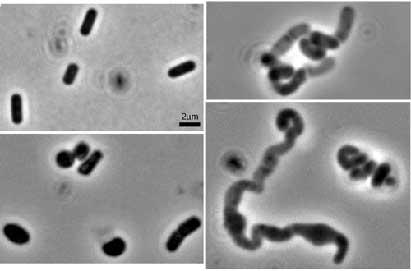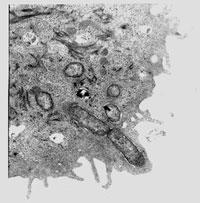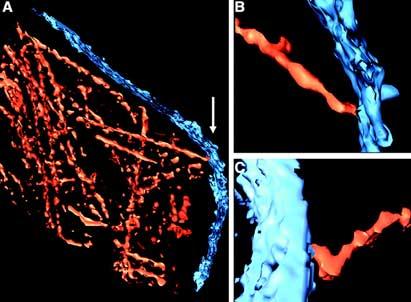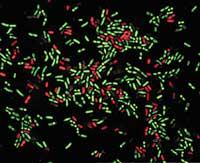Surprise in bacteria cavities
2001/03/26 Galarraga Aiestaran, Ana - Elhuyar Zientzia
The cytoskeleton of eukaryotic cells is mainly formed by the texture of actinic proteins in the form of long filaments. Bacteria have genes to conserve the cellular form, but most participate in cell wall formation and not internal structuring. In a study at the University of Oxford, microbiologist Jeffrey Errington and his team have seen two genes similar to the gene encoding actin.

In their research they were eliminated one by one to know the coding of the genes of the bacterium Bacillus subtilis. Thus, without the genus called mreB, they saw that the bacteria could not control its extension, the bacteria inflated in the middle and finally dies. In the absence of the Mbl gene, this cylindrical bacteria could not control its length and twisting.
The researchers found that these genes were necessary for the bacteria to retain their appearance and that they coded proteins that formed large propellers. The protein helix encoded by the MreB gene is located side by side in the width of the bacteria. Conversely, the double-helix protein spiral encoded by the Mbl gene is longitudinally from one end to the other. Its appearance resembles the cytoskeleton of eukaryotes.
In addition, it has been proven that the type of mreB gene is only present in bacteria in certain ways. For example, this type of gene is found in cylindrical or filamentous bacteria, but not in round bacteria. It seems that the lack of these genes determines a circular shape. On the other hand, researchers believe that mreB and mbl genes participate together with the system that forms the cell wall.
According to the researchers, this work shows more similarities than expected by bacteria and eukaryotic cell.

Gai honi buruzko eduki gehiago
Elhuyarrek garatutako teknologia





